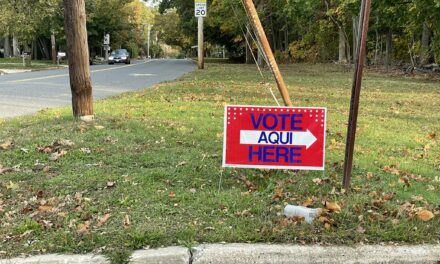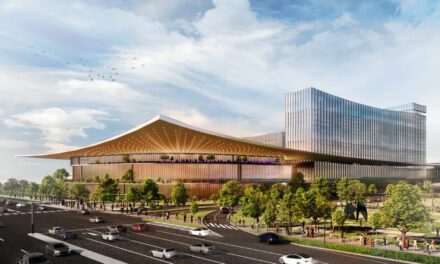The following was written for Long Island Business News. You can read the original here.
It has been 12 years since the terrorist attacks on Sept. 11, 2001.
In those 12 years, downtown Manhattan, as well as New York City as a whole, has been reshaping itself in ways many thought impossible just a decade before. Downtown has undergone a transformation from a primarily commercial area to a vibrant place where families move in and co-exist with the daily wave of office workers. The commercial vacancy rate downtown, a concern in the years after the attacks, is steadily diminishing as the new towers rise. With the pending completion of the skyline-dominating 104-story One World Trade Center in early 2014, as well as Four World Trade Center and Three World Trade Center, downtown New York will have fully rebounded.
For New York City and its surrounding environs, this rebound is a testament to the strength of the Big Apple’s resilience. The city’s growth model was so successful, in fact, that it will serve as a policy precedent for other aging urban areas to follow.
The keys to the city’s success? Reinvention and strong executive leadership to get the planned strategies implemented.
Resonant Growth and Challenges
The vibrancy has resonated throughout the rest of Manhattan, as well as parts of the other boroughs. Parts of the city that have languished for decades since the fiscal crisis of the 1970s, have experienced a rebirth. Areas like Harlem, the Grand Concourse in the Bronx, Williamsburg in Brooklyn and beyond have seen ample private and public investment in the post-9/11 years. Since 9/11, the City turned an industrial eyesore along the Lower West Side into a world-class attraction, and brought in waves upon waves of tourists by cleaning and protecting the streets. These tourist dollars helped to fuel the recovery, and continue to drive growth to this day.
Where the partnership has succeeded most is where government, private developers and the public have come together. However, as with any urban or suburban land use strategy, the approach, while successful, can be fine-tuned for maximum effectiveness. The lessons of New York City growth in the post-9/11 era should be examined, noted, learned and emulated where appropriate.
While Detroit struggles to climb out of both bankruptcy and the recession, and crime in Chicago is steadily on the rise, the tri-state region has flourished. New York City is not immune to these urban maladies. New York, according to Forbes, “faces painful challenges: soaring indebtedness, rapid aging, a weak technical workforce, expensive housing and high taxes.” Sound familiar? It should – Nassau, Suffolk and Westchester Counties face the same realities in the post-9/11 era.
To help stave off these crises, the city has benefited from strong leadership during 9/11 and the post-9/11 years. Both the Giuliani and Bloomberg administrations transformed New York from the gritty metropolis of the 1980s to the tourist friendly place we know today. Under Giuliani, crime declined rapidly, laying the foundation for a city that under Bloomberg was able to truly embrace the role of being one of the world’s great cities. The work of both administrations complemented one another and the region flourished with New York being one of the leaders the urban population boom.
The Price of Growth
Growth in the post 9/11 era does have its price. In the decade since the tragedy, the city became increasingly polarized. It is now a true tale of two cities: a city for the wealthy and a city for the rest. The specter of equality looms over the accomplishments of both administration’s economic development programs, which prioritized clean redevelopment over a true attack on the issues. Affordable housing is as much a need in the five boroughs as it is in Nassau and Suffolk counties, and in the post-9/11 era New York, these problems have become even more exacerbated. These will be the challenges for the next mayor and generation to work together to tackle.
“New York is still here.”
Despite these looming hurdles, New York has overcome the monumental obstacle of rebuilding both its infrastructure and most importantly, the psyche of its residents. New Yorkers still proudly work 50 stories up in the sky without a second thought. New Yorkers still fly across the country, use transit and frequent the tunnels and bridges. Where the Twin Towers stood now stands a memorial to help us remember and a 1,776-foot tall testament to New York’s strength.
The events of Sept. 11 scarred our city, but since those tragic events we’ve been able to rebuild truly stronger.
Often, we look at America’s ability to get things done with a cynical lens, but the renaissance of downtown New York City shows that despite a terrorist attack, subsequent recessions and multiple wars, the American city has amazing resilience. This is all thanks to the residents who call the city their home, and the civic pride that drive their actions each and every day.
The spirit of brotherhood New Yorkers showed the world during the aftermath of both 9/11 and Hurricane Sandy is not a special circumstance, but rather, it is a look into our true nature.
The evening of Sept. 11, 2001, Mayor Giuliani said it best, “New York is still here. We’ve undergone tremendous losses and we’re going to grieve for them horribly, but New York is going to be here tomorrow morning. And it’s going to be here forever.”
Richard Murdocco is a digital marketing analyst for Teachers Federal Credit Union, although the views expressed in this post are Murdocco’s alone and not shared by TFCU. Follow him on Twitter @TheFoggiestIdea, or email him at rich.murdocco@gmail.com.














